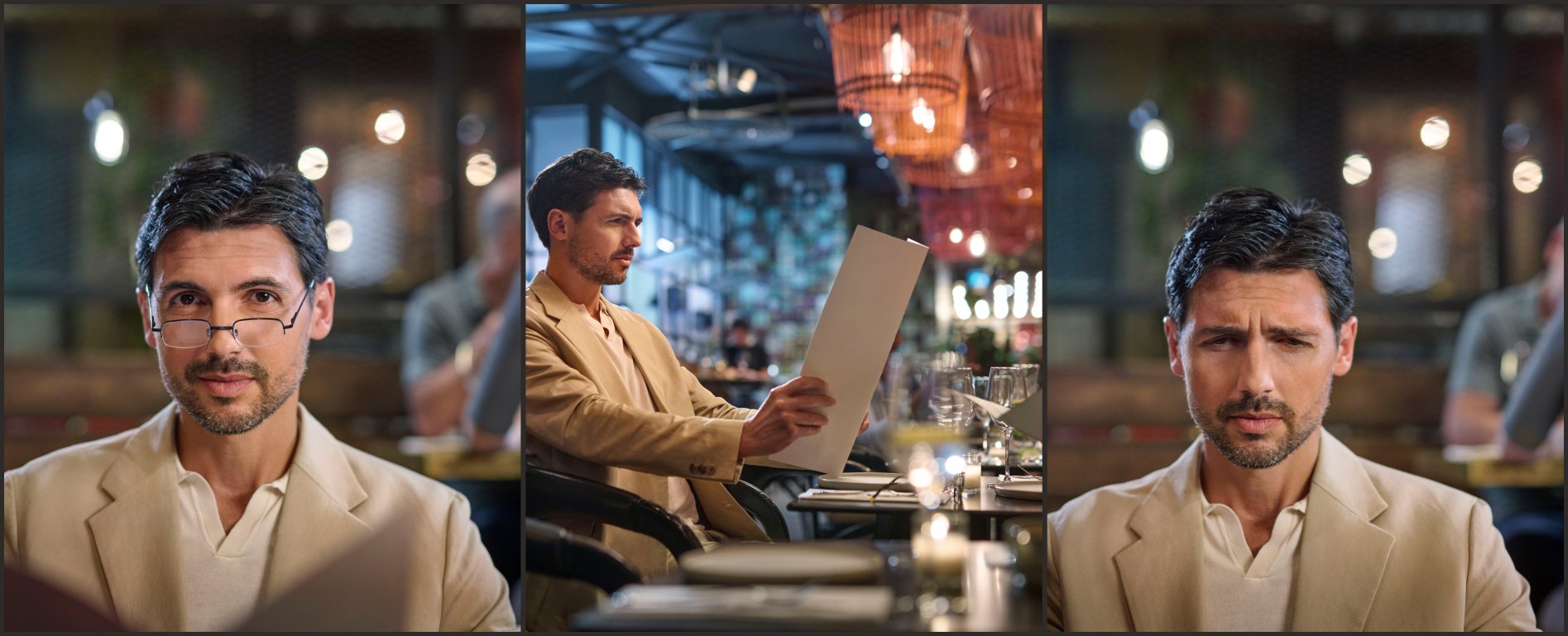Everyone has unique visual needs that evolve over time as we age. Already in our late 30s, we might notice the first signs of presbyopia and a gradual change in our ability to focus on nearby objects. These initial symptoms, such as needing more light to read, holding items farther away, or experiencing blurred vision at close distance, continue to develop with time.
In today’s digital era, an average person spends an average of 8 to 10 hours a day looking at screens —whether on phones, computers, tablets, or other digital devices.¹ This constant focus on near and intermediate distances intensifies our need for near-vision support as our vision becomes more progressively challenged.
Adapting our visual solutions at each stage of life is essential to maintain clear, comfortable vision for all our daily activities.
The truth about first presbyopic symptoms
People in their late 30s to mid-40s often aren’t aware of the early signs of presbyopia, or they may already wear glasses without realizing they need lenses tailored to these new visual changes. Research shows that 41% of people who wear glasses and 50% of those who don’t are starting to notice these shifts in focus², yet they may be hesitant to try progressive lenses.
Understanding these changes is the first step to finding solutions that fit your lifestyle, so you can keep enjoying clear, comfortable vision as you age.
What is presbyopia?
Presbyopia, more commonly known as age-related farsightedness or longsightedness, is the gradual thickening and hardening of the crystalline lens in your eye. As the crystalline lens loses its elasticity, the eye’s ability to focus on nearby objects declines. Light doesn’t properly focus on the retina, the light-sensitive tissue on the back of the eye, and instead focuses behind the retina thereby making nearby objects to appear blurred. Presbyopia develops while having other vision problems, including nearsightedness and farsightedness. As a result, the first presbyopic symptoms can start as early as your late-30s, often leading to difficulty focusing on close-up tasks like reading, using digital devices, or working on fine details.³
The first presbyopic symptoms
Many people, regardless of their existing visual needs, may start noticing symptoms of vision discomfort as early as their late 30s, and progress over the next 20 to 30 years. Whether you currently don't wear spectacles or wear single-vision glasses to correct overall vision, you may experience the following: ³,⁴
- Visual discomfort and need for more support at close up tasks
- Blurred vision at reading distance
- Eye strain with sore or tired eyes
- The need to hold material at arm’s length
- Headaches from doing close work
- Need for more light especially when reading

Why the above symptoms are commonly overlooked?
Visual discomfort from presbyopia is progressive. You may not notice it at first, but our eyes gradually lose their natural ability to focus on nearby objects. Initially, you might experience subtle signs like eye strain during extended up-close tasks. This can manifest as tired eyes, headaches, or fluctuating vision after staring at screens, along with dryness and irritation from reduced blinking. Over time, these issues can escalate, leading to more frequent visual discomfort and fatigue, as well as increased blurriness when performing activities at arm's reach. These symptoms evolve from barely noticeable to a prominent source of daily visual discomfort, which can be increasingly frustrating.
These changes are easy to overlook, as they’re often mistaken for general signs of aging or simple fatigue. However, they may actually be the first signs of presbyopia. What starts as a minor inconvenience can gradually develop into a persistent source of visual discomfort, which many find increasingly frustrating over time.
HOYA’s VisuPro spectacle lenses for a rejuvenated vision experience
Introducing HOYA's solution to young presbyopes’ unique visual needs: a rejuvenated vision experience and comfortable vision at all distances, all day, every day.⁵
HOYA’s VisuPro spectacle lenses are designed to meet the unique needs of young presbyopes, providing clear, comfortable vision for all activities, whether you currently wear glasses or not. These advanced focus lenses are tailored to individuals in their late 30s to mid-40s experiencing the first signs of presbyopia. VisuPro spectacle lenses provide sharp, effortless vision across all distances, ensuring a seamless and comfortable viewing experience throughout the day.
VisuPro All Day
If your vision is not as clear and comfortable as before and you start struggling with reading or close-up tasks, VisuPro All Day lenses are made for you. They provide precise and clear vision across all distances with unmatched comfort up-close when looking at near objects such as digital devices, thanks to HOYA Focus Max Optimization technology. They offer a natural and effortless vision for everyday activities in a single pair.
VisuPro Flex
Whether worn over your contact lenses or only when needed for near distance activities, they provide precise and clear vision across all distances with unmatched comfort up-close when looking at near objects such as digital devices. They offer natural and effortless vision in one single and aesthetic pair.
VisuPro solution benefits:
- Natural and effortless vision/focus all day
- Precise and clear vision across all distances, and unmatched comfort up-close
- Great personalisation of patients’ visual needs, preferences and individual parameters
- Supported eye strength to sustain prolonged tasks up-close
- Reduced eye strain or visual fatigue when working with digital devices⁴
